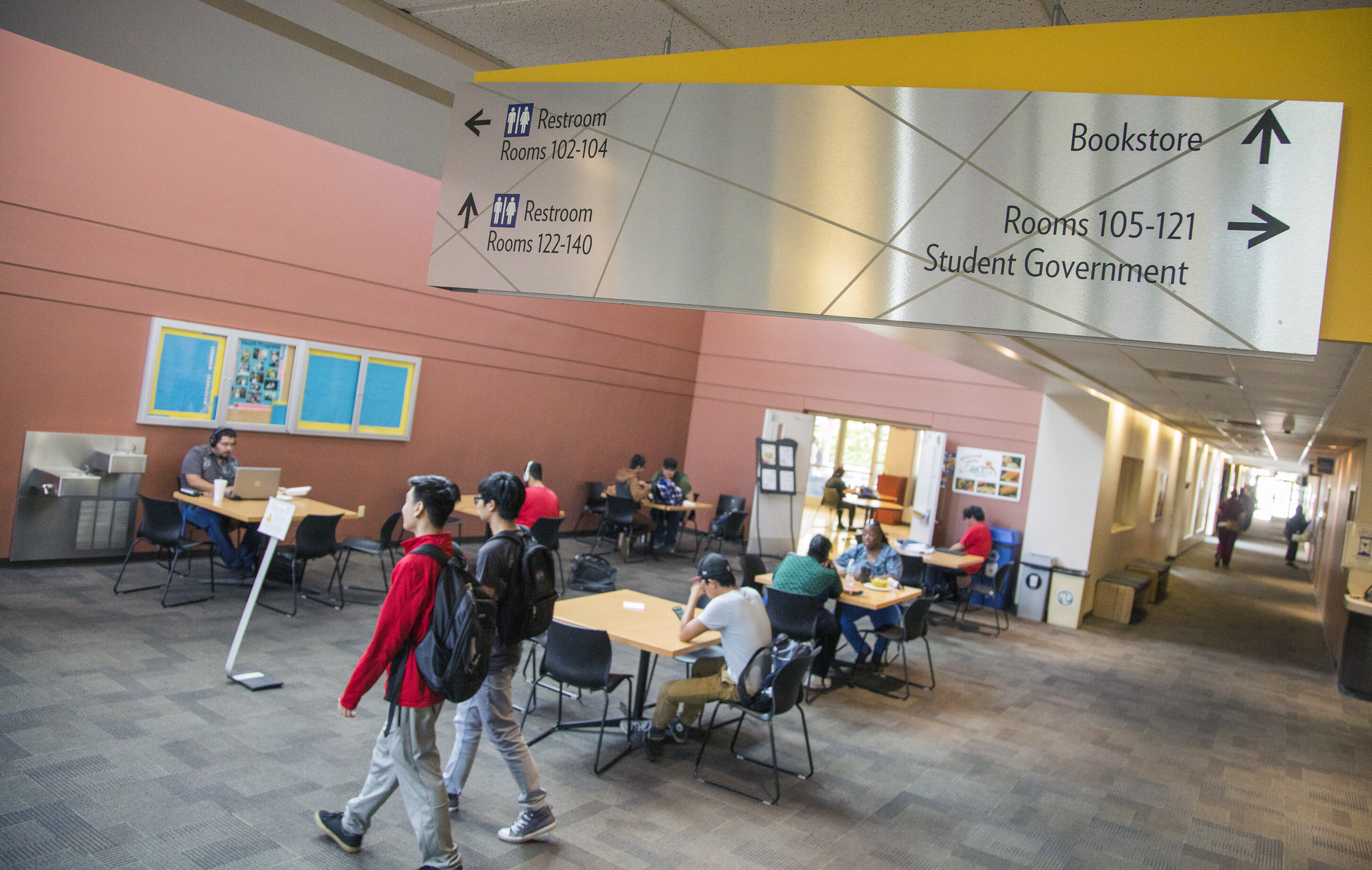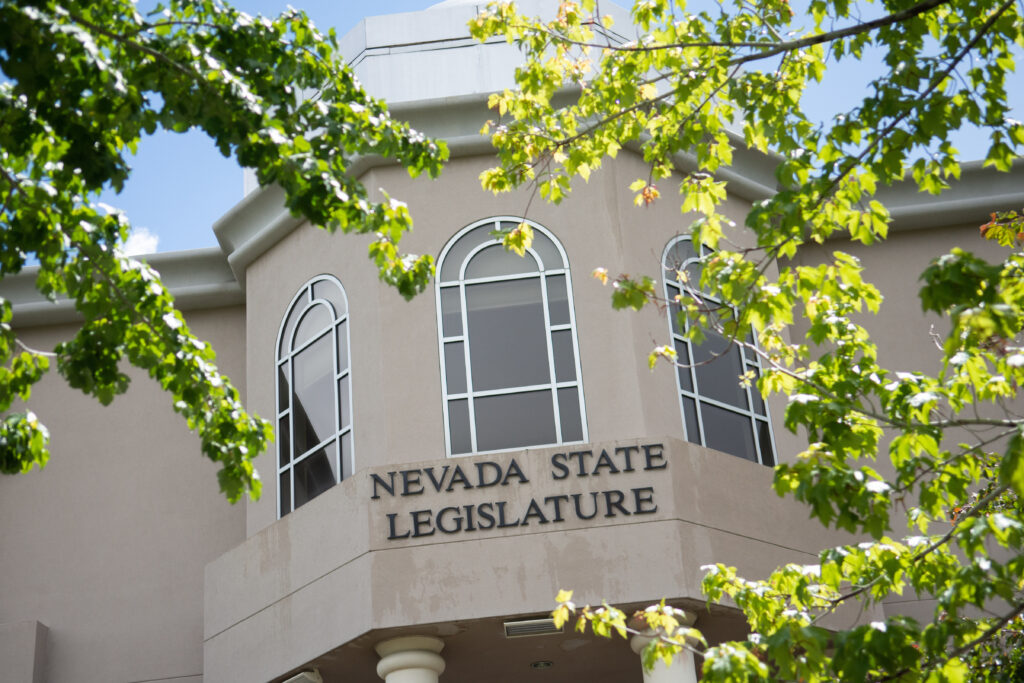Is higher ed's quest to 'align' colleges with workforce a solution in search of a problem?

More than eight months after Gov. Steve Sisolak shocked many in Nevada’s higher education world by floating the idea of breaking the state’s four community colleges off into their own governing board, nearly all parties are still waiting for the other shoe to drop.
Sisolak’s concept took the shape of AB450 — a legislative study committee tasked with aligning the state’s workforce development goals with the community college system.
Aug. 1 marked the one-year deadline for the committee to transmit its report and recommendations to the Legislature, but so far, the governor has not made any appointments to the study committee.
Unlike similar committees convened through the decades to study the state’s community colleges, the AB450 committee will be composed largely of economic and business representatives — not higher education officials.
One member will come from the Governor’s Office of Economic Development. Three more will represent local chambers of commerce or “economic development entities,” including one from the north and two from the south.
A fifth will be a labor representative with experience in a “jointly administered apprenticeship program” recognized by the state, and the sixth will be the superintendent of public instruction, a role currently filled by State Superintendent Jhone Ebert.
Rounding out the last two seats are members from the Nevada System of Higher Education (NSHE): The sitting chancellor, Melody Rose, and one to-be-determined president of a community college.
Proponents of AB450, most notably the governor, have cast it as a tangible step toward refocusing support of the state’s community colleges as a critical pillar in rebuilding Nevada’s post-pandemic workforce.
But even as many within NSHE and some regents have signaled openness to AB450’s planned committee, they have also suggested that it may be a solution in search of a problem. Pointing to existing programs, partnerships and more, some have even chafed at the suggestion that a “misalignment” on the issue exists.
“I don't see the example [of misalignment], even when you go to what would be more strictly a community college in our system like [Truckee Meadows Community College] or [the College of Southern Nevada] or [Western Nevada College],” Great Basin College President Joyce Helens said in an interview. “They're all responding to business and industry, all the time, and in very big ways.”
Creation of the study committee comes amid the backdrop of more than $75 million in cuts to NSHE approved by lawmakers in 2021, and also in the midst of nearly a decade of simmering tensions between lawmakers in Carson City and the 13-member board governing higher education.
Beyond the question of whether better “alignment” between community colleges and workforce development is needed, recommendations by the study committee could herald potentially seismic shifts in the state’s higher education structure — everything from governance models to how colleges and universities are funded.
The view from the inside
For those within NSHE, the words “workforce development” are already functionally synonymous with higher education — and have been for years.
“Higher education was creating teachers 147 years ago,” Regents Chair Cathy McAdoo said, referring to the year UNR was founded. “So yes, it's ongoing. It's not something that's just come on our radar.”
McAdoo, who also chaired the regent’s community college committee last year, said it’s not just community colleges, but the universities, too, that have long been a core driver the state’s workforce.
“I see all of higher education as workforce development,” McAdoo said.
McAdoo pointed to myriad higher education partnerships with massive corporations, including MGM Resorts International, Tesla, Panasonic and rural Nevada mining giants — all “proof of concept” of long-running collaboration between higher education curricula and private labor needs.
While acknowledging that the state’s higher education system as currently constructed isn’t perfect, community college leaders interviewed by The Nevada Independent said they have long held workforce development as a core part of their mission.

Speaking in an interview last month, CSN President Federico Zaragoza touted his college as a “major agent” of workforce development, in large part because of already existing efforts to line up programs with “emerging occupations.
“So I'll give you an example — we're not producing enough nurses,” Zaragoza said. “So we're right-sizing the program. We now have an opportunity to have a campus begin to offer nursing. So that'll allow us to double the number of nurses in an area of high demand. That helps diversify, obviously, the student enrollment, but also feeds the diversification of the economy.”
Zaragoza also said the community college system would likely play a crucial role in retraining workers whose jobs were wiped away by shifts in the post-pandemic economy.
“The other element here that's critical is a lot of people are getting displaced,” he said. “About 50,000 of the people that were displaced during the pandemic are not coming back to their previous jobs, so we're retraining those individuals into these areas of high demand.”
At Great Basin College — an Elko community college with campuses across rural Nevada — part of the existing focus on workforce development comes simply from the realities of operating a school built to service the state’s “rural frontier.”
“This is a business, and we're in the business that embraces the technical college, the community college and the liberal arts four-year missions,” Helens said. “But we have to cover the cost of doing this business, and so the revenue sources work together to be able to do that and balance our bottom line.”
Helens said the school’s work was never in the “abstract,” but rather an active effort to communicate with the largest businesses in the region — namely mining companies or equipment companies such as Komatsu — to develop training programs and job pipelines.
She touted the school’s successes, praising the rapid development of a welding program and a trucking program with the combined efforts of corporate funding, state grants and existing college resources.
Helens also said she did not see any implied “misalignment” between existing programs at GBC and the broader stated goal of AB450 in workforce development.
“I don't know where that came from,” she said. “It’s—absolutely nothing I have experienced in my 40-plus years of working in community and technical colleges. And [it’s] the same at Great Basin College. When we were founded, I mean, we're always responding to business and industry. There is no misalignment.”
Helens conceded that there are areas that could be improved, mentioning possible efforts to create “better points of contact” for industry. Still, she praised existing workforce efforts at NSHE institutions and praised partnerships between GBC and other sister institutions like CSN and UNR.
“I have asked the question, ‘Where'd that come from?’ — just like you are asking,” Helens said. “Give me an example, because I don't see the example.”
Money, governance and the road ahead
If the question of misalignment is nebulous for administrators and regents, it isn’t for David Damore — a professor and chair of the political science department at UNLV, a fellow at Brookings Mountain West and a vocal critic of the state’s governing structures for community colleges.
“I see it as thinking more broadly about the state's economic development efforts in aligning within the regions to the sectors that the RDAs, the Regional Development Authorities, are supposed to go and recruit to come to the bat,” Damore said. “I don't see a whole lot of integration between what's going on in the economic development world, and the workforce development you're seeing at the institutions.”
Pointing to a 2011 workforce study from Brookings Mountain West that laid out a number of strategic statewide goals for economic development, Damore said there was a fundamental “disconnect” between a centralized statewide higher education system that, in his view, was not responsive to regional economic differences between North and South.
The process of addressing those issues at a policy level, Damore said, ultimately drove at the twin prongs of AB450: money and governance.
On the money question — more specifically, the question of how state funding is allocated per-institution by the existing formula — administrators and outside observers have for years characterized the existing structure as “one-size-fits-all.”
Developed in 2011 and approved by lawmakers in 2013, the formula’s current iteration centers on weighted student credit hours as a measure that endeavors to account for the differences between inexpensive courses, such as an English lecture, and more costly resource-intensive lab or graduate courses.
That formula also came at a critical political juncture for the state’s higher education system, as proponents of a still-young UNLV sought newfound parity for a funding system they had long criticized as tilted toward UNR by influential northern lawmakers — parity that a new formula could deliver.
“That has been the success of this structure,” Damore said. “UNR and UNLV both made Carnegie [R1 very high-research classification]; you’re starting to see much more research output and all those things. But that comes at the expense of small schools.”

For community colleges, both observers and administrators said a gap has emerged in and among an increasingly large slice of students who are in non-degree programs — courses that range from IT certifications to nursing training — that don’t count toward the number of weighted credit hours.
“I've got about 15,000 students that are non-credit students at CSN,” Zaragoza said. “So the formula doesn't work for them. And so looking at the formula, it's important for workforce because there are different pathways. The formula is perfect for the traditional student, but for non-traditional students that are looking for short-term training, or for short-term upgrading, that are non-credit based, that's the gap that we’ve got.”
Zaragoza and others have pointed out such gaps could be addressed in the coming legislative session, and he said he was “cautiously optimistic” that 2023 could reverse downward funding trends for higher education in Carson City budget negotiations.
Amid the financial chaos triggered by the pandemic, Sisolak and state lawmakers had initially slashed state agency budgets by 12 percent for each of the next two fiscal years, a cut that would have amounted to more than $169 million lost over two years for NSHE.
That cut was ultimately blunted with the distribution of federal aid in the twilight hours of the legislative session, and lawmakers ultimately added back $93 million for faculty and staff salaries in a last-minute move that avoided layoffs. The remaining operational cuts were not restored, however, and NSHE institutions will enter the fall semester with almost $76 million in budget reductions.
Still, Sisolak called for additional funding for community colleges just weeks later.
“I've always maintained — from my time on the Board of Regents to the [Clark] County Commission to now as governor — our community colleges are underfunded and underappreciated and overlooked, unfortunately,” Sisolak said during a roundtable event in June.
It was the second time in as many weeks that Sisolak — who spent 10 years as a regent before being elected to the Clark County Commission in 2008 — had raised the issue of “underfunded and underappreciated” community colleges in Nevada.
But the second major change that could be spurred by AB450 — and what could ultimately become a more political question — is one of governance structure, though precisely how or what could come is among the many questions with few answers at this early stage.
Damore — who joined several colleagues early this year in penning an op-ed in the Las Vegas Sun criticizing the community college structure — said one possible outcome is a broad decentralization of community college governance through the use of individual boards for each institution while maintaining the overall administrative structure of NSHE writ-large.
Whether the AB450 committee and legislative recommendations that follow will treat NSHE administration and the broad idea of “governance” as two different questions remains to be seen.
“That's the million-dollar question,” Damore said. “The current structure has really conflated governance and administration … And so, the part of the point of having these discussions now, in theory, is having another discussion about whether or not NSHE and the regents should be coupled in this way.”
The mere mention of governance and reform has dredged up another parallel issue: that the Legislature has for years sought to increase its oversight of the Board of Regents, in large part by stripping the regents of their position in the state Constitution and placing them in state law instead.
That effort eventually took the form of 2020’s Ballot Question 1, which ultimately failed by a narrow margin of 0.3 points.
But nearly as soon as it died at the ballot box, the measure was revived by lawmakers as SJR7. With language tweaked by proponents explicitly to avoid the pitfalls that sank the measure on the first try, SJR7 sailed through this year’s legislative session. If political winds do not drastically shift on the issue in 2023, SJR7 could be on a direct course to the ballot box in 2024.
SJR7 and Question 1 before it have for years stirred debates over not just the simple oversight of regents by legislators, but foundational questions over constitutional interpretations and the very purpose of an elected board of 13 regents.
And though proponents of the measure have sought to distance themselves from the implication that Question 1 could create an appointed board, some lawmakers have long sought to do just that — including a bill as recently as 2019, SB354, that made it through the Senate before dying in an Assembly committee.
Even as it is nominally tied to the outside issue of workforce development, the simple charges of AB450 have nonetheless emerged in a political environment in which that question — how the state’s higher education system should be governed — has shaped the broadest contours of higher education politics.
Administrators have so far said little on the governance question, pointing in large part to the absence of tangible policies to comment on. Zaragoza pointed to his own experience at higher education systems with “two very distinct governance structures,” most notably a stint in Wisconsin, and noted “advantages and disadvantages” to each.
“I've seen both of them work, and both of them not work,” Zaragoza said. “I think the real issue becomes what is the plan? The execution? And what's the substance of what's being proposed? And that's the part that I haven't seen.”
Helens went a step further, praising existing institutional leadership at the community level and saying “we need a system that works; we don’t need another system.”
“The governance of one system is important because then everybody knows where everybody's doing,” Helens said. “I've had multiple presidencies in different kinds of situations with separate governance systems. It’s always one fighting the other for more funding. The more we are unified and look at our whole state, and serving our state and the importance of all the pieces, the better off we are.”
Beyond the question of how to revise the funding formula, there are few clear answers on how the committee could choose to revise or reform governance. But unlike the many attempts to study the state’s community colleges through the decades, mandatory provisions within AB450 will produce legislative recommendations for 2023 — and a question long asked may finally be answered.
“You know, this goes back to the founding of the system in the 1960s,” Damore said. “You've had study committees in the 70s and 80s. So the issue of where community colleges fit and what we want out of community colleges is a really, really old question. It's just been studied, but never really acted on.”
Correction, 8/15/21 at 9:05 p.m. - An original version of this story referred to the 2019 bill SB354 as having gone unheard in the Assembly. It has been updated to reflect that the bill was heard in an Assembly committee, but died without receiving a vote in that committee.
